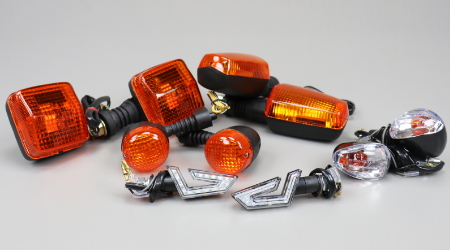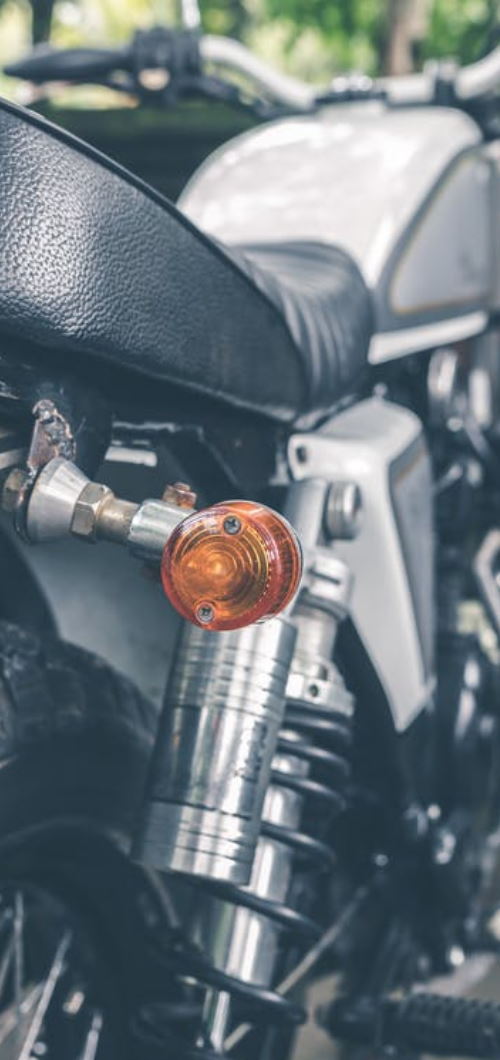Troubleshooting > Failures par brand > HONDA > The indicators of my HONDA 50 motorcycle are faulty
The indicators on my HONDA motorcycle work poorly or no longer work
The flashing lights are important elements for your safety. Indeed, the blinkers are not only mandatory, but also really necessary to clearly signal your intentions.
In the event of a malfunction, here are the checks to be carried out, in order, using a multimeter:
- the battery is charged
- the current arrives at the commodo
- the current arrives at the flasher unit
The first thing to do is to determine exactly the symptom or symptoms of the malfunction. Indeed, several failures are possible.
The different turn signal failures on your 50 HONDA motorcycle
- The two blinkers on the same side light up, but weakly, and flash more slowly; when the night lights are on, they do not blink at all.
- A blink indicator one side does not light up, and the other flashes more slowly: the warning light on the dashboard does not light up .
- The blinkers front and rear on the same side do not light up.
- None of the four blinkers does not light up.
These various failures have different origins and they must be remedied par a method adapted to each case.
Solutions of possible failures on the indicators of your 50 HONDA motorcycle?
1) If all the turn signals remain off:
It's probably a fuse The cause of the failure.
2) If the turn signals work weakly or stay on continuously:
It's here central who is involved.
3) If the turn signals do not come on from one side only:
Look for the failure on the side of the switch box
. There are several possible variations of this failure. In any case, neither the fuse, nor the switch box
, nor the bulbs are not involved. It is therefore either a problem with grounding, or poor electrical contact, or a flashing center defective.
Indeed, blinkers requiring a high current, it is possible that bad electrical contacts affect the flow of current to a greater or lesser extent. If these are not very good, the blinkers will only light dimly and run slower. The solution to all these faults is to check the condition of the earth connections.
4) If one of the turn signals does not come on:
Here the cause is obvious: it is quite simply a question of Bulb grilled, or possibly one of its contacts broken or completely oxidized. Clean the contacts with fine grit emery cloth, rubbing until the copper is shiny.
If it's the bulb which is involved, simply replace it par another of the same power. This is indicated in watts either on the base or on the glass of the bulb.
Once this part has been repaired, the entire device should operate normally. The other blink indicator will resume its rhythm and the indicator light on the instrument panel should come on.
5) If the turn signals on the same side no longer work:
Check the bulbs. Make sure they are properly supplied with power. Check that the switch box
distributes the current well on the offending side.
6) If none of the four indicators light up:
This is a general power failure. First check that the fuse serving the blinkers is not toasted, then make sure the central is well fed.
In case it is not, check for an interruption in the power wire using a pilot light. If it is supplied correctly, replace the flashing center which is flawed.
Make sure beforehand that the connections to the switch box
are correct and that it is not par chance out of use on both sides. Finally, but this is very rare, it is possible that the four bulbs or only two are burnt out due to overcurrent in the electrical circuit.
In this case, it is the regulator which is in question, but that is another problem.













